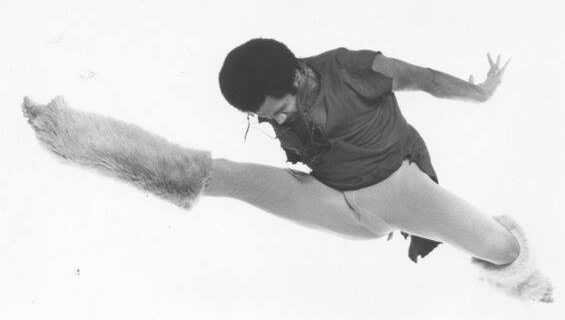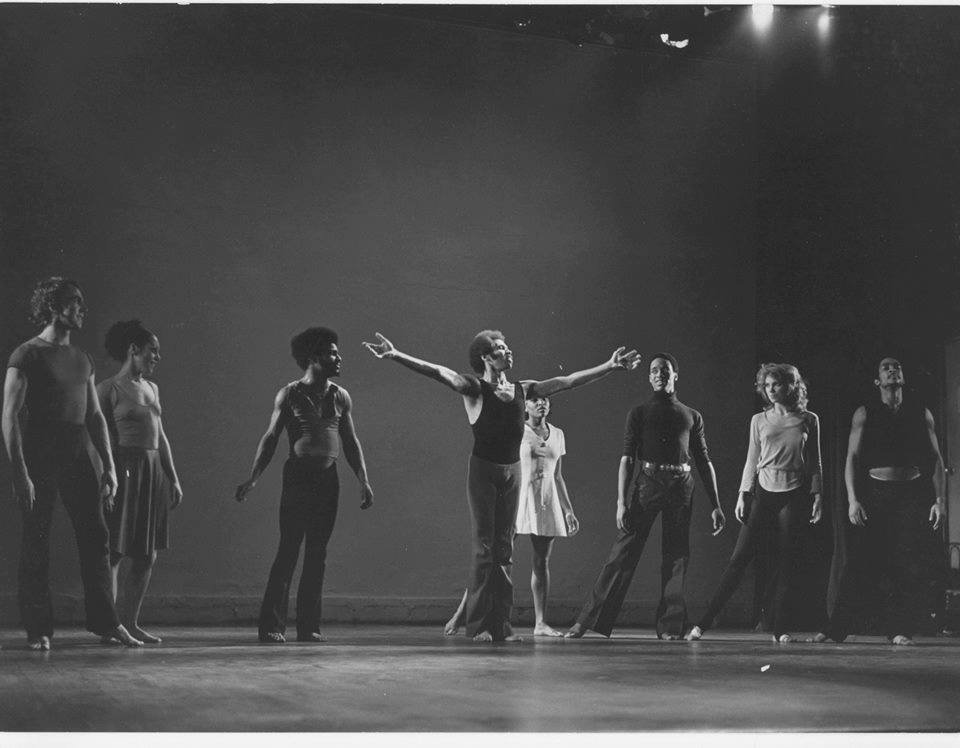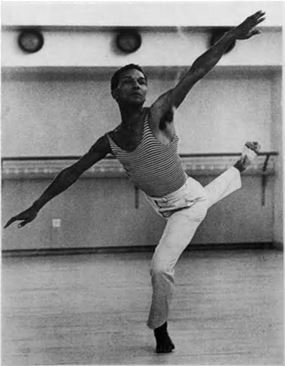FREDERICK CHARLES BENJAMIN
by Dale Ricardo Shields
Page 1 – 8
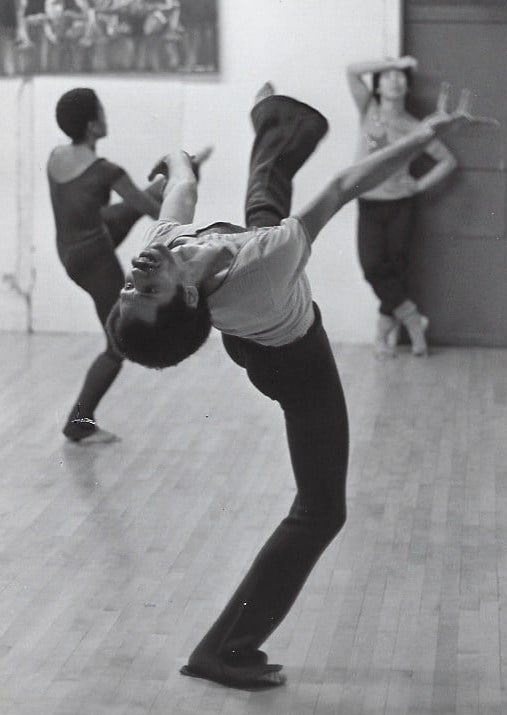
Dancer – Choreographer
{ September 8, 1944 – December 14, 2013 }
Page 1 – 8
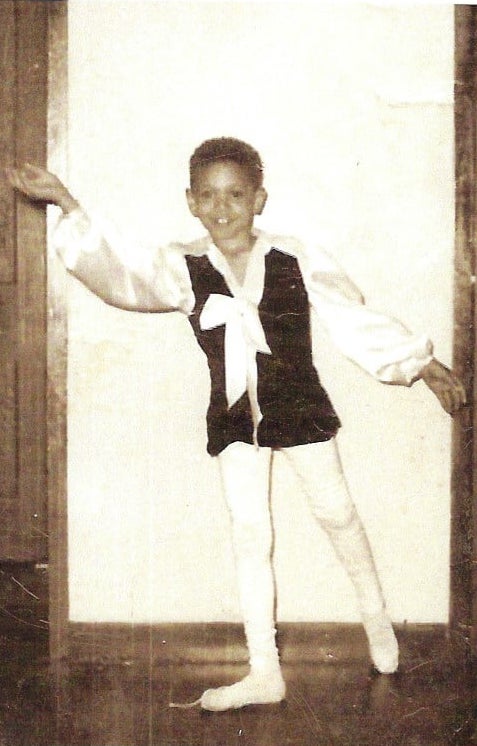

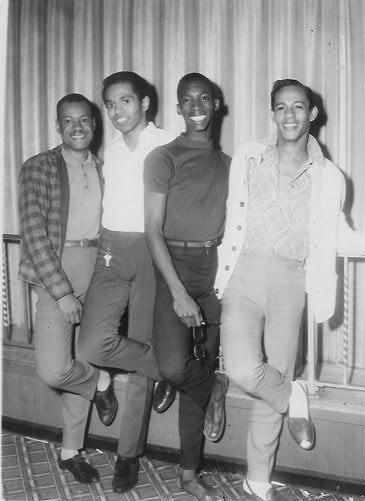
Club Harlem – Donald Fontaine, Fred Benjamin, Billy Graham, and Llewellyn Wade (1964)
Elma Lewis

Elma Lewis, a nationally recognized arts educator who was among the first people to be awarded a MacArthur Fellowship.
(September 15, 1921 – January 1, 2004)
“Ms. Lewis, considered a doyenne of Black culture in Boston, was a no-nonsense mentor to generations of young dance, opera, and theater students at the Elma Lewis School of Fine Arts, which she founded in 1950 in a Roxbury apartment before moving it permanently to a former synagogue and school in the same area. In 1968 she founded the National Center of Afro-American Artists, which still exists although the school closed in 1986. In addition to becoming a MacArthur Fellow, she received a national medal for the arts in 1983.”
“Elma Lewis was one of Boston’s most revered cultural icons. In the 1950s, she founded the Elma Lewis School for Fine and Performing Arts, where thousands of African-American children and adults learned cultural history, explored their creativity, and cultivated their artistic skills. In the 1960s, Miss Lewis and her students cleared an overgrown area in Franklin Park where the Overlook Shelter had burned and then erected the Playhouse stage to create an open-air performance venue.”
“She operated the Elma Lewis Playhouse in the Park, a summer theater where musicians played to capacity audiences in Franklin Park in Roxbury after she had overseen an effort to rid the area of drug dealers and garbage. Duke Ellington and the Boston Pops Orchestra, under Arthur Fiedler, were among the performers there.
Asked in a 1981 interview in The Times if she felt like a token as one of three women among 21 MacArthur fellows, Ms. Lewis said that she had felt exclusion more because of her race than because of her sex. “As a matter of fact,” she said, “Women’s problems belong to White women because it is in that White dominant group that men are keeping women from utmost dominance. The Black man is oppressed, and I can’t imagine a man brave enough to oppress me.“
When Mr. Benjamin moved to New York in 1962, she financed his ballet lessons. When the MacArthur Foundation initiated its “Genius” grants, Ms. Lewis was among the first recipients, singled out as one of the foremost dance educators in a Black community. She also introduced him to Tally Beatty, who became another important mentor and to whom he paid tribute in his choreography.”
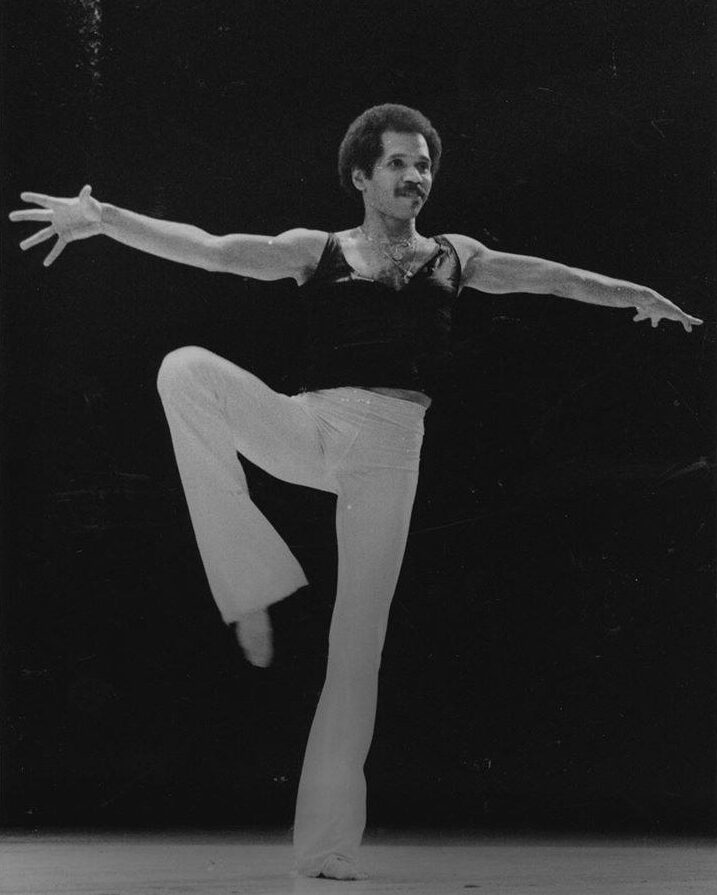
FREDERICK CHARLES BENJAMIN
Talley Beatty
Talley Beatty became a principal dancer with the Katherine Dunham Company at age 16. After touring with the Dunham Company for five years and appearing in film and Broadway shows such as Cabin in the Sky, Pins, and Needles, and Blue Holiday. He also danced with famed dance anthropologist Pearl Primus.
Mr. Beatty formed his own company and toured throughout Europe, the US, and Canada. As part of his choreographing for Broadway, he was nominated for a 1977 Tony Award as Best Choreographer for Your Arm’s Too Short to Box with God. Dance companies around the world have mounted his ballets, including Dance Theatre of Harlem, Bat-Sheva Company, Koln Opera Ballet Company, Boston Ballet, Stockholm Dance Theatre, and Ballet Hispanico. Alvin Ailey American Dance Theater has performed a number of his major works, including The Road of the Phoebe Snow (1959), Come and Get the Beauty of it Hot (1960), Stack-Up (1982), and Blueshift (1983).
“Benjamin modeled himself after his idol, Tally Beatty. Benjamin added ballet to Beatty’s contemporary, energized style and helped popularize the genre known as ballet-jazz. Talley Beatty introduced many inner-city youths to dance via the Harlem Cultural Council’s annual DanceMobile series. Throughout his career, Fred remained associated with Black community dance programs. The group movement in “Parallel Lines,” the emphasis on entrances in a work such as “Our Thing,” the signature sassiness of many other works — all reflected Beatty’s influence. Benjamin added ballet to Beatty’s contemporary, energized style and helped popularize the genre known as ballet-jazz. He introduced many inner-city youths to dance via the Harlem Cultural Council’s annual DanceMobile series, but his greatest gift may have been in teaching. The company was restructured after its merge into the Talley/Benjamin Project and the subsequent death of Talley Beatty. His choreography for other companies includes Ice Fire for Alvin Ailey Repertory Ensemble, After the Rain for Impulse Dance Company Boston, he set Ice Fire, Left Over Wine, Cauldron, Black Coffee on Gallman’s Newark Dance Theatre and he set his ballet Beattyville on Philadanco.“
“Talley Beatty was born in Cedar Grove, Louisiana, a section of Shreveport, but grew up in Chicago, Illinois. He is considered one of the greatest of African American choreographers and also bears the titles of a dancer, educator, and dance company director.
After studying under Katherine Dunham and Martha Graham, Beatty went on to do solo work and choreograph his own works which center on the social issues, experiences, and everyday life of African Americans. Beatty and his technique and style of dancing have been both praised and criticized by critics and dancers of his day.”
From Wikipedia, the free encyclopedia
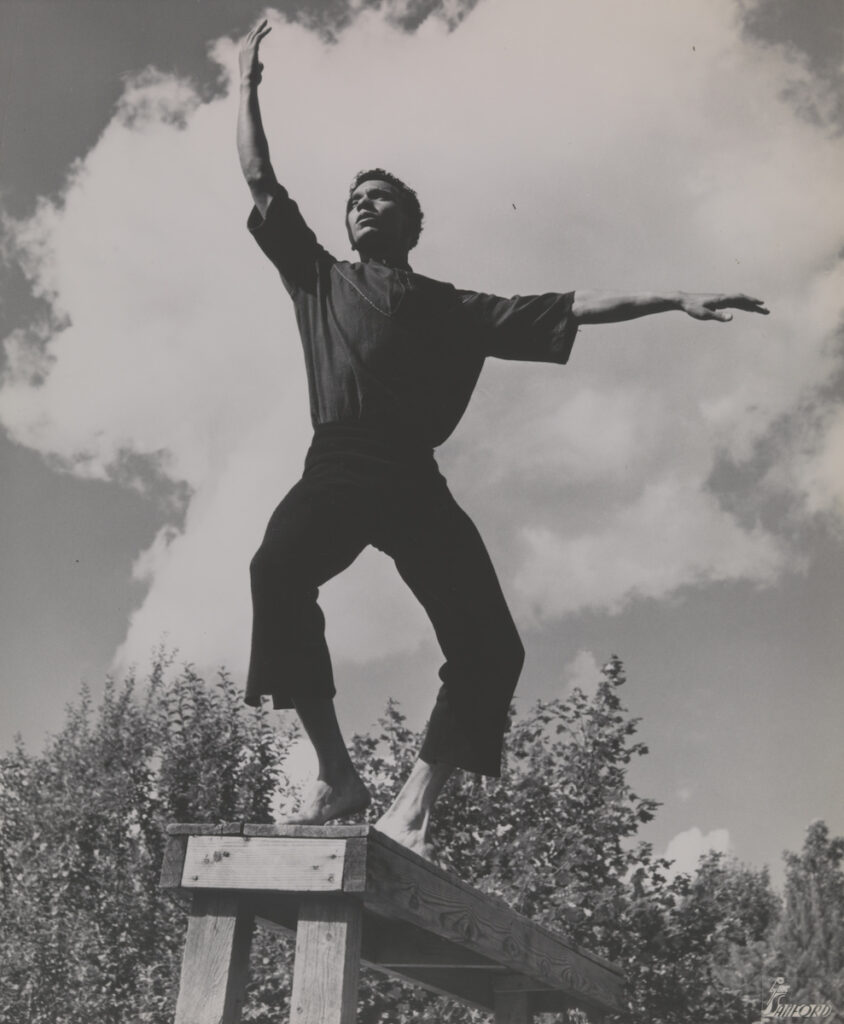
Talley Beatty in “Mourner’s Beach“ (Photo by John Lindquist)
Benjamin danced with choreographer Talley Beatty from 1963 until 1966 when his dance company closed. Fred Benjamin modeled himself after his idol, Tally Beatty.
Fred was often concerned with Black Heritage, an influence he derived from the modern-dance pioneer mentor.
Beatty was an important mentor, and his jazz-infused style that emphasized themes prevalent in the African American experience deeply influenced Benjamin’s work.
Alvin Ailey
Like most African-American choreographers of the time, Benjamin’s work was compared to that of Alvin Ailey
Alvin Ailey was born in Rogers, Texas. His experiences of life in the rural South would later inspire some of his most memorable works. He was introduced to dance in Los Angeles by performances of the Ballet Russe de Monte Carlo and the Katherine Dunham Dance Company, and his formal dance training began with an introduction to Lester Horton’s classes by his friend Carmen de Lavallade. Horton, the founder of one of the first racially integrated dance companies in the United States, became a mentor for Mr. Ailey as he embarked on his professional career. After Horton’s death in 1953, Mr. Ailey became director of the Lester Horton Dance Theater and began to choreograph his own works. In the 1950s and 60s, Mr. Ailey performed in four Broadway shows, including House of Flowers and Jamaica.
In 1958, he founded Alvin Ailey American Dance Theater to carry out his vision of a company dedicated to enriching the American modern dance heritage and preserving the uniqueness of the African-American cultural experience. He established the Alvin Ailey American Dance Center (now The Ailey School) in 1969 and formed the Alvin Ailey Repertory Ensemble (now Ailey II) in 1974. Mr. Ailey was a pioneer of programs promoting arts in education, particularly those benefiting underserved communities. Throughout his lifetime, he was awarded numerous distinctions, including the Kennedy Center Honor in 1988 in recognition of his extraordinary contribution to American culture. In 2014, he posthumously received the Presidential Medal of Freedom, the country’s highest civilian honor, in recognition of his contributions and commitment to civil rights and dance in America. When Mr. Ailey died on December 1, 1989, The New York Times said of him, “you didn’t need to have known [him] personally to have been touched by his humanity, enthusiasm, and exuberance and his courageous stand for multi-racial brotherhood.”
Alvin Ailey was an African-American choreographer and activist who founded the Alvin Ailey American Dance Theater in New York City.
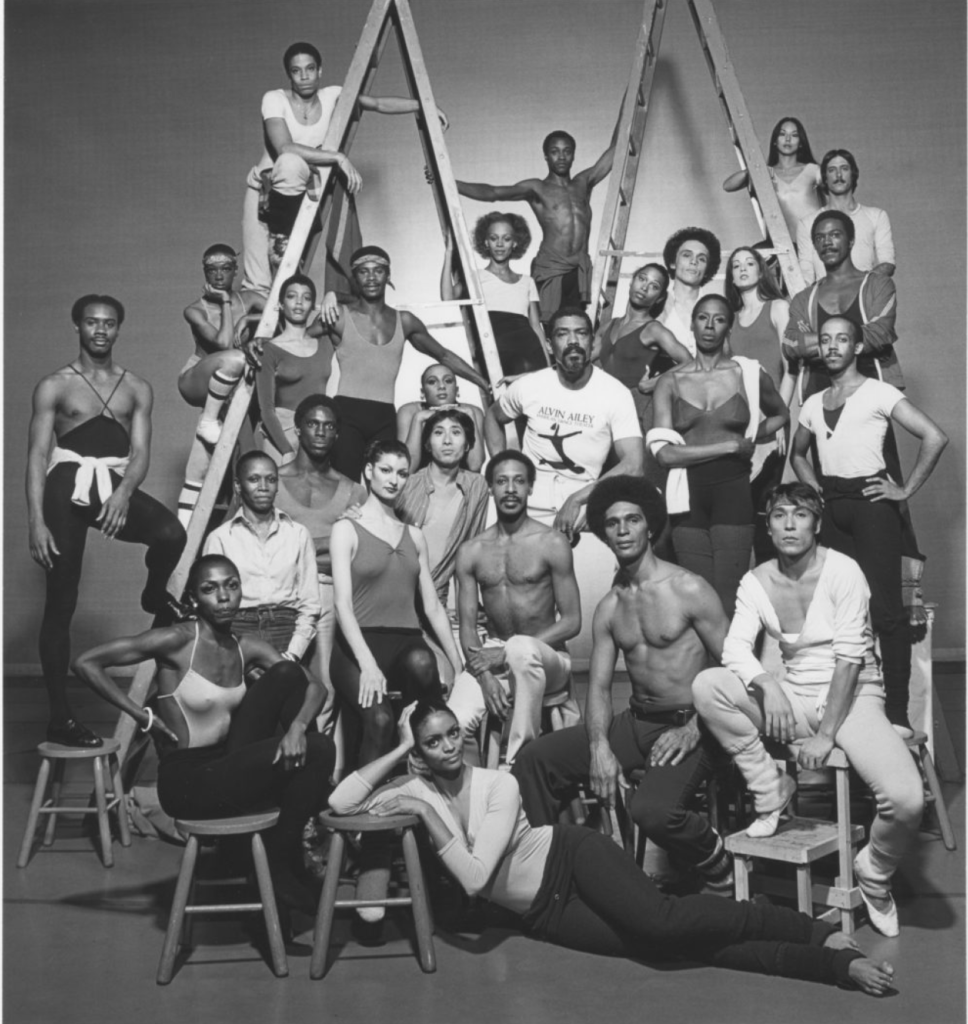
Alvin Ailey with the Company in 1978. Photo by Jack Mitchell. (©) Alvin Ailey Dance Foundation, Inc. and Smithsonian Institution
Ailey is credited with popularizing modern dance and revolutionizing African-American participation in 20th-century concert dance.
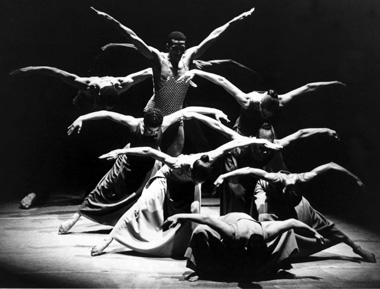
“Revelations” by Alvin Ailey
The Alvin Ailey American Dance Theater is a modern dance company based in New York City. It was founded in 1958 by choreographer and dancer Alvin Ailey.
From Wikipedia, the free encyclopedia

Fred Benjamin, Leslie Watanabe, Marvin Tuning, and Fred Bratcher. the photo is identified as ‘Alvin Ailey Workshop Dancers. (1973)
CLARK CENTER FOR THE PERFORMING ARTS
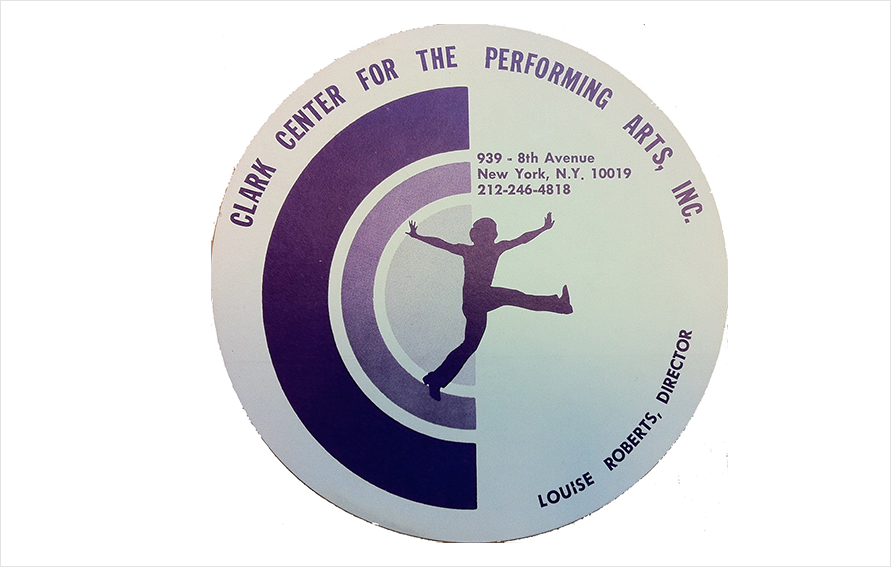
THE MISSION
Clark Center NYC is dedicated to preserving the history, and continuing the legacy of Clark Center for the Performing Arts, created, with great inspiration of Alvin Ailey, in 1959 as a uniquely diverse arts community in New York City. A rich resource for dancers, choreographers, students, and others interested in dance, Clark Center expands its Website content, archives, education/mentoring, symposia, and presentations to honor the past, champion the present, and build for the future.
HISTORY
Alvin Ailey helped to create Clark Center under the auspices of the Westside YWCA. He was one of the gifted young artists who emerged in the late 1950s and early 1960s. This upsurge of talented, mostly Black dancers and choreographers were eager to have their work seen on the concert stage but had little or no access to rehearsal space to create their work. According to Mr. Ailey, who referred to Clark Center as his ‘ritual home,’ “Dance grew like Topsy there. Clark Center was the only reason we were able to continue.” For 30 years Clark Center trained dancers, encouraged emerging companies, and identified and developed new choreographic talent. The YWCA provided the space as well as administrative salaries and services. Originally a multi-arts center that included classes and performances in other disciplines such as opera and theater, by 1970 it focused almost exclusively on dance. The one exception to this trend was Playwright’s Horizons, an off-Broadway theater company established in 1971 that provided a showcase for new playwrights and directors with Robert Moss as producer.
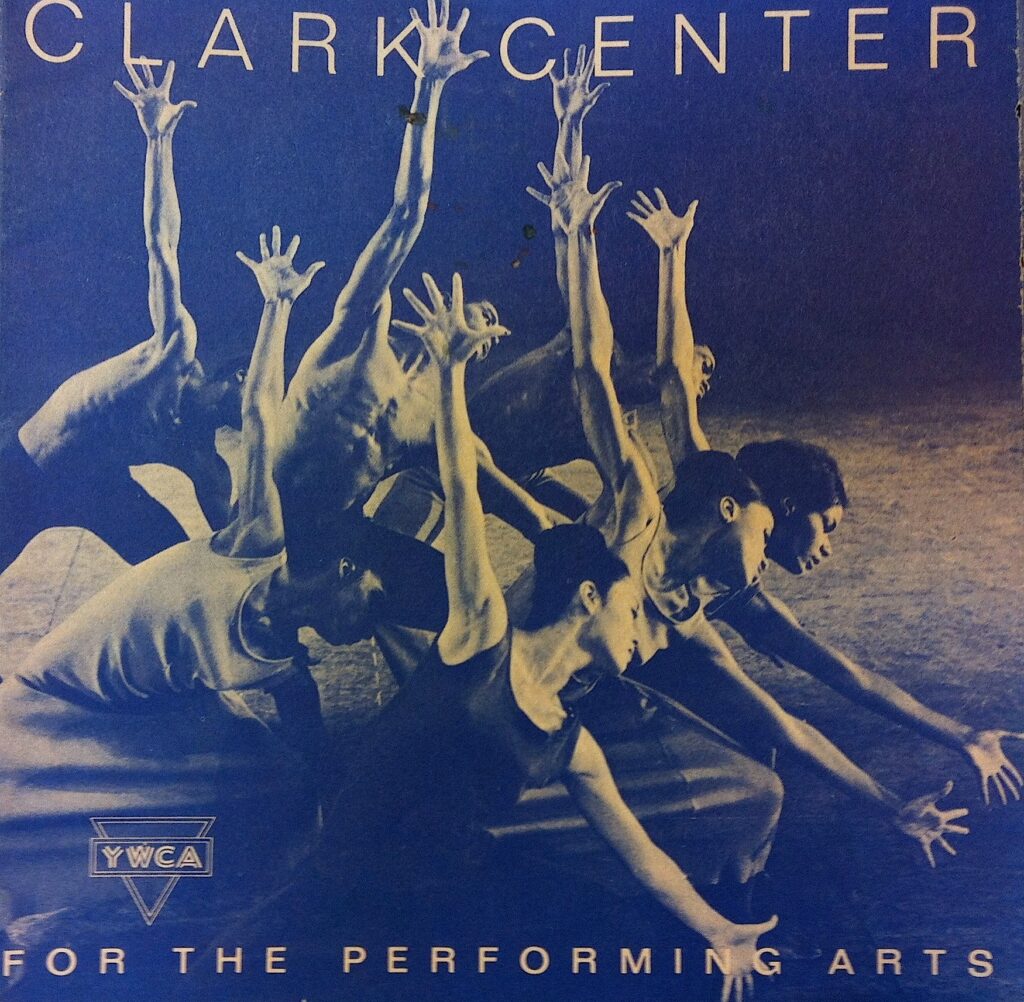
For many years Fred operated his own dance studio and school on West 55th Street between Broadway and Eighth Avenues. With the ever-changing Manhattan skyline and the escalating prices for real estate, Fred was forced to leave his studio during the ’80s and he found a new home as a resident dance company at the Clark Center for the Performing Arts.
Clark Center for the Performing Arts was immediately successful as the setting within which a balanced curriculum of dance ranging from classical ballet to ethnic dance was taught. At the same time, Clark Center began to produce the work of evolving dance companies to support their development and to present new, emerging choreographers.
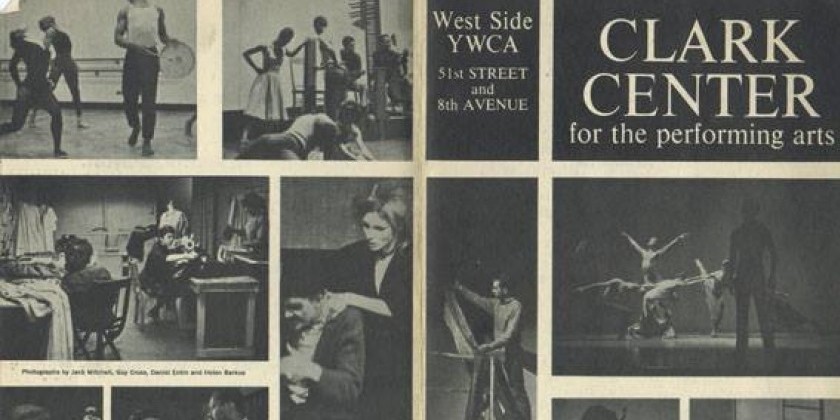
An Inspiration For The Future. The Clark Center for the Performing Arts, a vision inspired by dance luminary Alvin Ailey, and other celebrated dancers and educators, was established in 1959 and has always been known for diversity, inclusion, and providing opportunities for African-American artists and artists of color.
http://www.clarkcenternyc.org/571227/home/
Until 1974, Clark Center was located at the YWCA on Eighth Avenue. With the closing of the Y, the center moved its teaching activity into affordable, basic quarters on Eighth Avenue. Clark Center developed a well-known reputation in the dance community for quality dance instruction at affordable prices. Production activities continued at the Mall of the City University Graduate Center on 42nd Street until 1978. The use of the Mall became a highly regarded City summer event and growth in class attendance heightened production activity.
Famous Clark Center Choreographers
Alvin Ailey
Talley Beatty
Carmen DeLavallade
George Faison
Syvilla Fort
Louis Johnson
Eleo Pomare
Thelma Hill
Donald McKayle Pepsi Bethel
Charles Moore
George Faison
Morse Donaldson
Dianne McIntyre
Michael Peters Rod Rodgers

